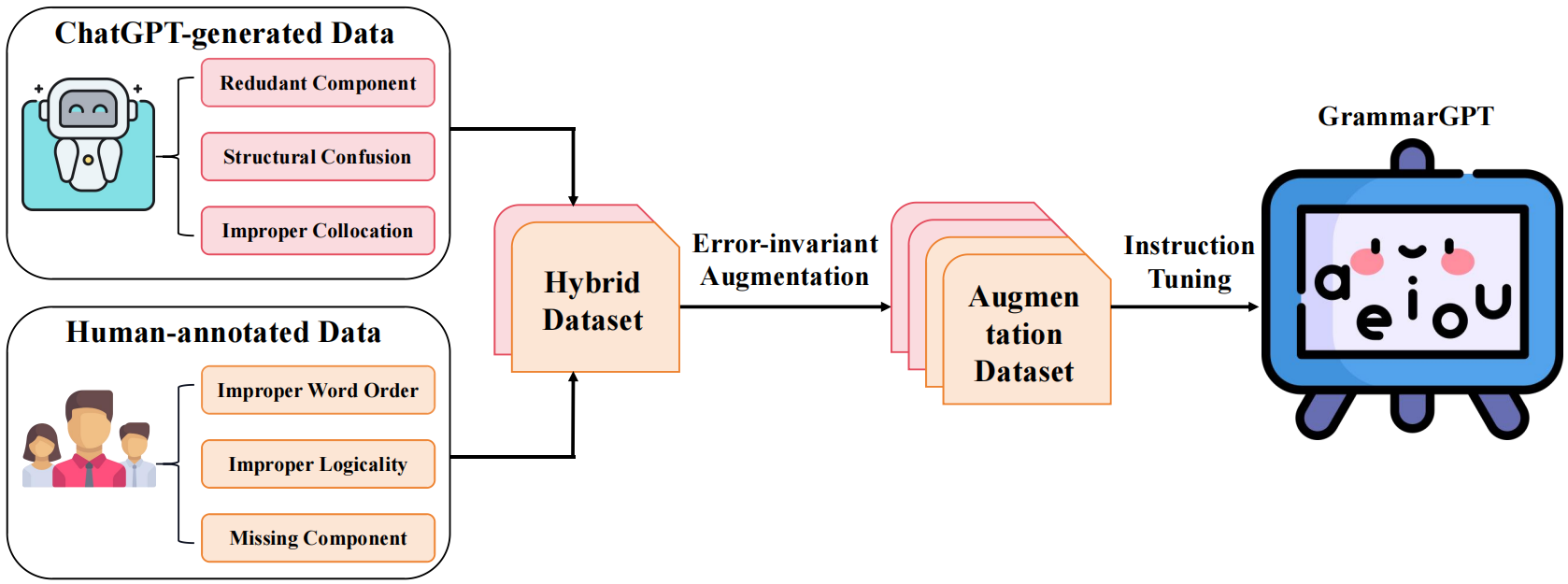GrammarGPT: Exploring Open-Source LLMs for Native Chinese Grammatical Error Correction with Supervised Fine-Tuning
Grammatical error correction aims to correct ungrammatical sentences automatically. Recently, some work has demonstrated the excellent capabilities of closed-source Large Language Models (LLMs, e.g., ChatGPT) in grammatical error correction. However, the potential of open-source LLMs remains unexplored. In this paper, we introduced GrammarGPT, an open-source LLM, to preliminary explore its potential for native Chinese grammatical error correction. The core recipe of GrammarGPT is to leverage the hybrid dataset of ChatGPT-generated and human-annotated. For grammatical errors with clues, we proposed a heuristic method to guide ChatGPT to generate ungrammatical sentences by providing those clues. For grammatical errors without clues, we collected ungrammatical sentences from publicly available websites and manually corrected them. In addition, we employed an error-invariant augmentation method to enhance the ability of the model to correct native Chinese grammatical errors. We ultimately constructed about 1k parallel data and utilized these data to fine-tune open-source LLMs (e.g., Phoenix, released by The Chinese University of Hong Kong, Shenzhen) with instruction tuning. The experimental results show that GrammarGPT outperforms the existing SOTA system significantly. Although model parameters are 20x larger than the SOTA baseline, the required amount of data for instruction tuning is 1200x smaller, illustrating the potential of open-source LLMs on native CGEC. Our GrammarGPT ranks $3^{rd}$ on NLPCC2023 SharedTask1, demonstrating our approach's effectiveness. The code and data are available at \url{https://github.com/FreedomIntelligence/GrammarGPT}.
PDF Abstract

